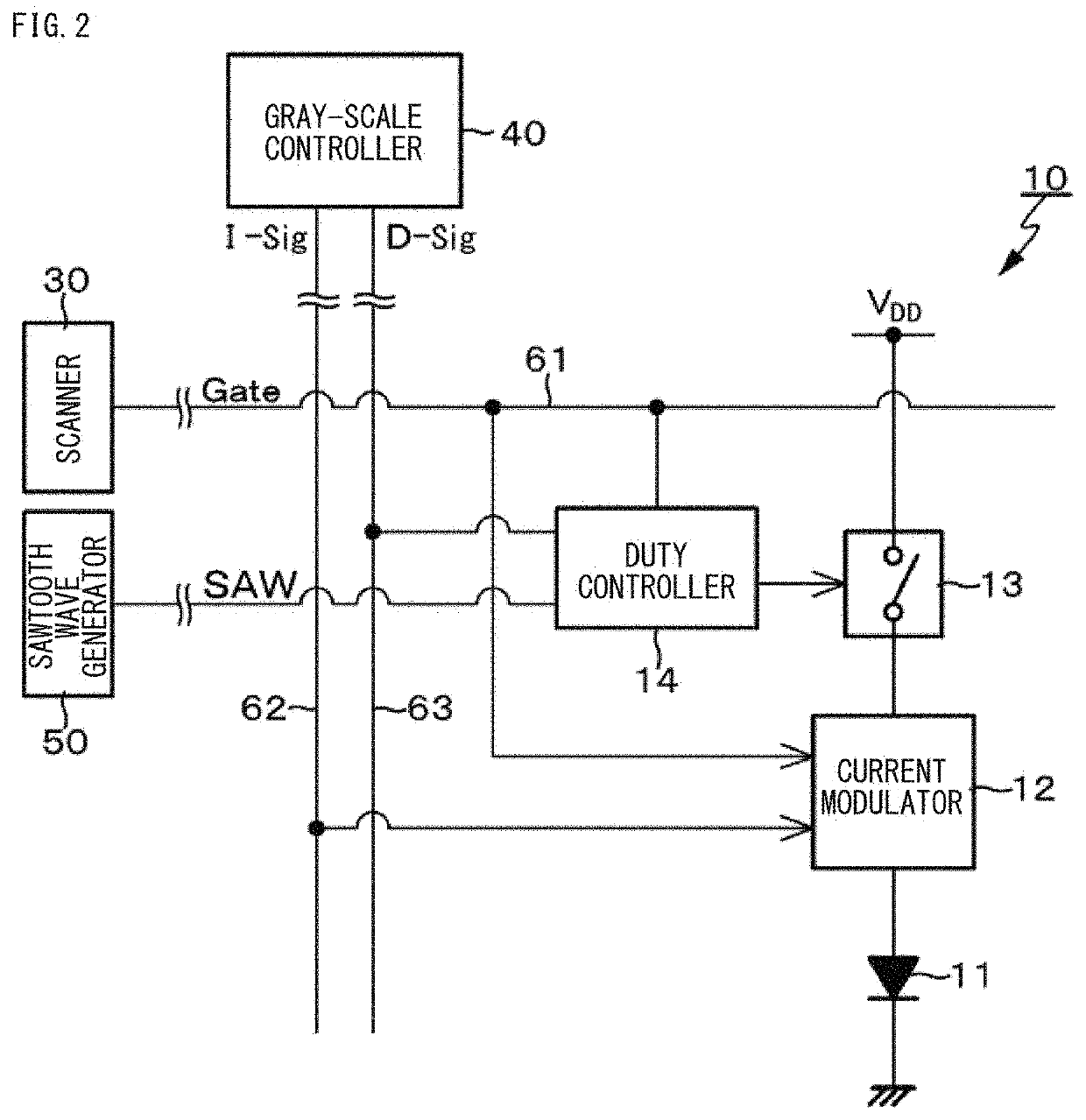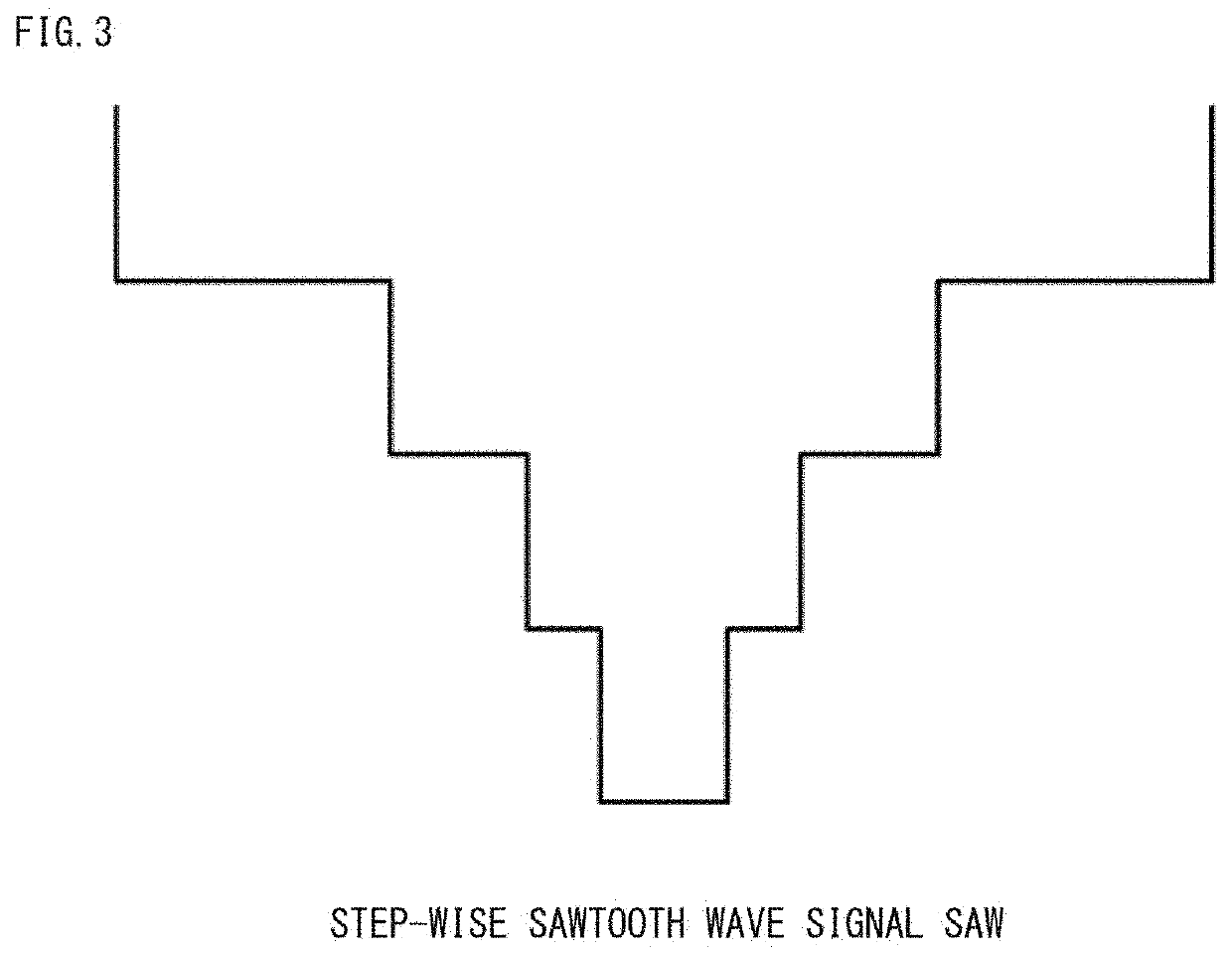Display device, method of driving display device, and electronic apparatus
a display device and display device technology, applied in the direction of electrical devices, semiconductor devices, instruments, etc., can solve the problem that the current modulation scheme in which a current value flowing through an element is controlled is considered unsuitable for driving the light-emitting diodes
- Summary
- Abstract
- Description
- Claims
- Application Information
AI Technical Summary
Benefits of technology
Problems solved by technology
Method used
Image
Examples
example 1
[0057]Example 1 is a circuit example of the pixel circuit 10 according to Example 1. FIG. 2 illustrates a circuit diagram of the circuit example of the pixel circuit 10 according to Example 1.
[0058]The pixel circuit 10 has a configuration including a light-emitting element 11, a current modulator 12, a switch element 13, and a duty controller 14. It is possible to use a self-emitting element such as a light-emitting diode (LED) or an organic EL element as the light-emitting element 11.
[0059]In the pixel circuit 10 according to Example 1, a light-emitting diode (LED) is used as the light-emitting element 11. It is to be noted that it is known that in the light-emitting diode, a spectrum exhibits a so-called blue shift in which the spectrum is shifted to blue side by a current (a light emission current) flowing through the element, thereby causing fluctuations in chromaticity by the value of the light emission current and large luminance variation in a low current range.
[0060]The curr...
example 2
[0066]Example 2 is an example of a driving method in which gray-scale control is performed with use of the pixel circuit 10 according to Example 1. The gray-scale control is performed in the pixel circuit 10 according to Example 1 under control by the gray-scale controller 40 by control of the current value of the light-emitting element 11 by the current modulator 12 and on / off control of the switch element 13 by the duty controller 14.
[0067]Gray-scale change is considered, for example, in a case where the pixel circuit 10 according to Example 1 is used to decrease luminance from a state of a maximum light emission current value at a maximum light emission duty.
[0068]First, the current value of light-emitting element 11 is decreased finely, and the current value is decreased until luminance reaches a certain ratio (proportion) to maximum luminance. Then, the light emission duty is decreased to the ratio at this time, and the current value of the light-emitting element 11 is returned...
example 3
[0075]Example 3 is an example of a driving method in which chromaticity correction is performed in a current range used for gray-scale control.
[0076]As described above, according to the driving method according to Example 2, it is possible to implement gray-scale control using only a limited current range (the current range X illustrated in FIG. 5). However, in the light-emitting element 11, specifically, the light-emitting diode, a spectrum exhibits a blue shift by the light emission current as described above, thereby causing chromaticity change by the current value of the light emission current. FIG. 8 illustrates a luminance-chromaticity difference characteristic diagram in a case where chromaticity is not corrected. In displaying or the like of an image of which colors change smoothly, chromaticity change by the light emission current may cause an issue such as banding (dark and light stripes).
[0077]In the driving method according to Example 3, chromaticity correction in a sing...
PUM
 Login to View More
Login to View More Abstract
Description
Claims
Application Information
 Login to View More
Login to View More - R&D
- Intellectual Property
- Life Sciences
- Materials
- Tech Scout
- Unparalleled Data Quality
- Higher Quality Content
- 60% Fewer Hallucinations
Browse by: Latest US Patents, China's latest patents, Technical Efficacy Thesaurus, Application Domain, Technology Topic, Popular Technical Reports.
© 2025 PatSnap. All rights reserved.Legal|Privacy policy|Modern Slavery Act Transparency Statement|Sitemap|About US| Contact US: help@patsnap.com



